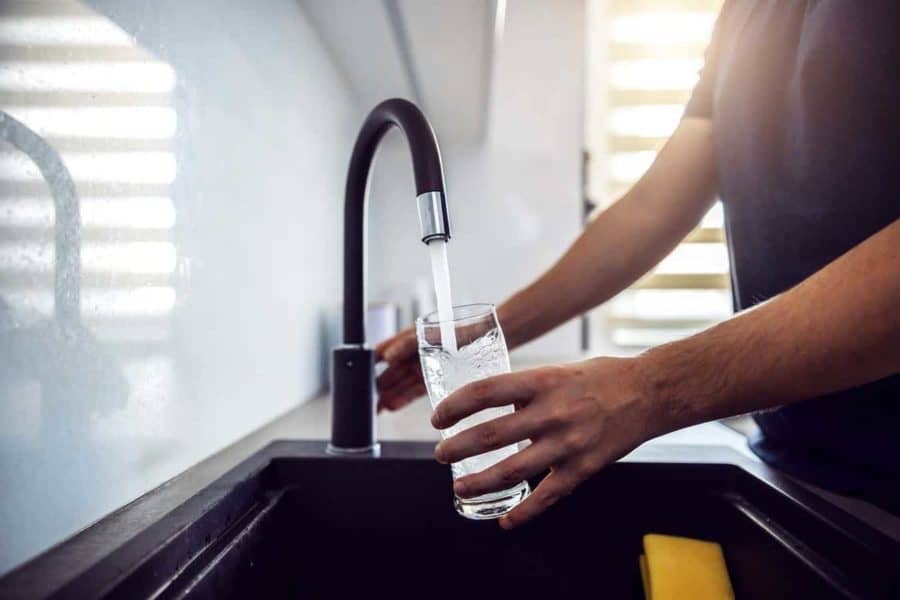The Korea Institute of Machinery and Materials (KIMM), an institution under the jurisdiction of the Ministry of Science and ICT, has developed an innovative process that uses renewable energy to produce ammonia at room temperature and normal pressure. This innovative technology is expected to dramatically contribute to achieving carbon neutrality in the future through the development of an ammonia production process that produces zero carbon emissions.
Led by the Principal Researcher Dr. Dae Hoon Lee, the KIMM research team at the Department of Plasma Engineering succeeded in developing an innovative, carbon-zero process for producing ammonia. On August 5th, they published their research findings in ACS Energy Letters, a renowned journal in the field of energy research.
*Article Title: “Plasma Catalyst-Integrated System for Ammonia Production from H2O an N2 at Atmospheric Pressure”
The organic process of synthesizing ammonia (the Haber-Bosch method), developed by Fritz Haber and Karl Bosch in 1913, uses ammonia as a fertilizer, and is regarded as a discovery that greatly increased agricultural productivity and served as the basis for agricultural innovation. Especially, the ammonia has been receiving attention as an eco-friendly fuel with zero carbon emissions recently. This is because ammonia, which is a compound of nitrogen and hydrogen, does not emit carbon dioxide even when burned.
However, to synthesize ammonia using the Haber-Bosch method, high-pressure and high-temperature conditions must be met, with a pressure of at least 200 atm and a temperature of at least 400 degrees Celsius. Also, since fossil fuels such as natural gas are used to produce hydrogen, a large amount of energy is consumed, thus leading to high levels of carbon dioxide emissions.
According to a 2020 report by the Royal Society*, the Haber-Bosch method consumes around 1.8% of the world’s energy to produce ammonia, and the levels of carbon dioxide emitted in this process account for 1.8% of the world’s total carbon dioxide emissions.
The process for producing ammonia developed by the KIMM research team involves combining water with nitrogen plasma, thus producing hydrogen and nitrogen oxides. These resulting oxides and reduced to ammonia by hydrogen with catalysts. More than 99% of the nitrogen oxides produced by this plasma reaction become nitrogen monoxide, which can be easily reduced to ammonia. The nitro monoxide then react to the co-produced hydrogen to produce ammonia with over 95% of high selectivity, and the heat generated during the plasma decomposition process is used for the catalytic synthesis process.
Since this process does not use any fossil fuels and is a technology that can produce ‘green ammonia’ with zero carbon dioxide emissions, it can achieve a yield 300 to 400 times greater than that of existing electrochemical ammonia production technologies which are considered as the alternatives for the Haber-Bosch method.
In addition, this process can be expanded on a large scale relatively easily through modular system due to the fact that the reaction occurs with only the water and nitrogen at room temperature/pressure condition, as opposed to the high-temperature/pressure conditions that must be met for existing methods of ammonia production. Furthermore, an aqueous solution of nitrate, a byproduct generated as a result of the ammonia production process, can be used as an agricultural nutrient solution and oxidizing agent.
In the future, the KIMM research team hopes to improve the cost and efficiency of ammonia production by developing scale-up and commercialization technology. The team also aims to collaborate with domestic and foreign engineering companies in expanding their efforts to ammonia plants, particularly small- and medium-sized plants that can operate at normal-pressure and room-temperature conditions.
Principal Researcher Dr. Dae Hoon Lee emphasized that he and his team have developed an eco-friendly ammonia production process that can be applied to actual facilities and, in theory, does not emit any carbon. He also stated that he and his team will do their best in conducting follow-up research and development to help dramatically cut global carbon emissions.
If our reporting has informed or inspired you, please consider making a donation. Every contribution, no matter the size, empowers us to continue delivering accurate, engaging, and trustworthy science and medical news. Independent journalism requires time, effort, and resources—your support ensures we can keep uncovering the stories that matter most to you.
Join us in making knowledge accessible and impactful. Thank you for standing with us!

